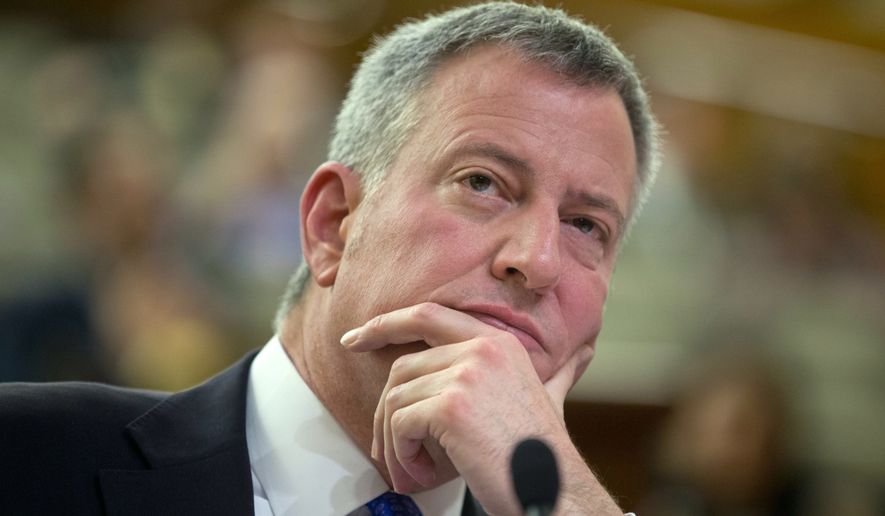OPINION:
Hillary Clinton believes governmental policies that promote fairness are also the drivers of economic growth.
“My mission in the White House will be to make our economy work for everyone, not just those at the top,” she said last week while laying out her economic plan. “The more we do to help working families, the more our entire economy will benefit.”
She then framed her initiatives for raising the minimum wage, ensuring paid family leave, stronger unionization and the redistribution of wealth from those at the top percent to those on the bottom rung of the ladder, through a revised tax code.
All progressive ideas — all which have failed the middle class.
Nine of the 10 cities with the largest income gaps have Democratic mayors at the helm, and their inequality gaps have only widened since 2007, according to the Brookings Institute. Meanwhile, among the cities with the least inequality, six are led by Republicans who believe in pro-growth, free-market solutions.
“Most metro areas experienced increases [in inequality] because top incomes were stable or declined modestly over this period, while incomes near the bottom dropped substantially,” said the report, published earlier this year. Meaning, the rich were able to keep their money and the poor lost theirs.
Per the report, income inequality can be a cyclical, hard-to-break trend. It can diminish the ability of local schools to “maintain mixed-income populations that produce better outcomes for low-income students,” shrink the tax base, which in turn shrinks local budgets, and raises the price of goods and services for poor households.
So what are the Democratic mayors doing about it?
Boston Mayor Marty Walsh endorsed a gradual increase in the hourly minimum wage from $10 to $15 for his city and for the entire state. New York City Mayor Bill de Blasio announced a $15 minimum wage for all city government employees and those who have provided contracted work this year. All of the progressive mayors have put their support behind a living wage ordinance.
The Federal Reserve Bank of San Francisco wrote in its economic notes last year: “the overall body of recent evidence suggests that the most credible conclusion is a higher minimum wage results in some job loss for the least-skilled workers — with possibly larger adverse effects than earlier research suggested.”
Meaning: A higher minimum-wage hurts the least advantaged the most. It grows the inequality.
Seattle is already seeing this effect, and the Wendy’s fast-food chain said self-ordering kiosks will be implemented in its stores in the second half of the year as minimum-wage hikes push up salaries. Fewer jobs for those who need them most.
Paid family leave sounds great, but will end up costing the working class by looting their paychecks. New York state lawmakers, who instituted a similar bill, will deduct funds from everyone’s paycheck to maintain the program, with the percentage of the deduction changing yearly.
Gov. Andrew Cuomo suggested it will cost the average employee “roughly 70 cents a week the first year, and $1.40 a week by 2021,” but others say it could end up costing five times as much.
More than three-quarters of private-sector jobs already provide paid leave, according to the National Federation of Independent Business. It doesn’t matter if your employer is one of these — you’re still going to have to pay for leave of others. The lowest-income workers will pay into the system and collect many times what they’ve paid in, but people who earn more than $67,000 a year will have to pay a percentage of every dollar they earn and are limited to what they can collect.
Quite simply, it’s a redistribution of wealth, a taxation on the middle class regardless if they want the benefit or not. It’s also not a growth model, punishing small businesses with just a few employees the most, according to The National Federation of Independent Business. How can they fill a position for 12 weeks and then promise an old job back?
Stronger unionization is also not the answer to ending inequality.
Economists Emin Dinlersoz, of the Census Bureau and Jeremy Greenwood, a professor at the University of Pennsylvania, believe weaker unions are a symptom of today’s polarized economy, not a cause.
As Bloomberg reports, “as high-productivity unionized industries such as manufacturing replaced people with machines, low-skilled union workers became less valuable, particularly in relation to better-educated employees. Unions work by equalizing wages across different types of workers. But once higher-skill workers became more valuable, they had less incentive to unionize with their less-skilled colleagues and the model fell apart.”
Moreover, most lower-income workers don’t have the same skill set they once did — like pressmen in newspapers’ heyday — and they operate in low-margin businesses and are easy to replace, eroding their negotiating ability. This model simply doesn’t work in today’s economy, yet you continually hear progressive mayors, governors and presidential candidates pressing for further unionization.
The tax code is the best way to redistribute wealth — if that’s the goal — and Mrs. Clinton’s does a good job at that. If you believe growth is the model to a better economy — that the country needs to do better than 1.2 percent GDP expansion in order to increase wages and jobs — then you need to look elsewhere.
Perhaps to those six Republican mayors whose cities suffer from the least inequality.




Please read our comment policy before commenting.